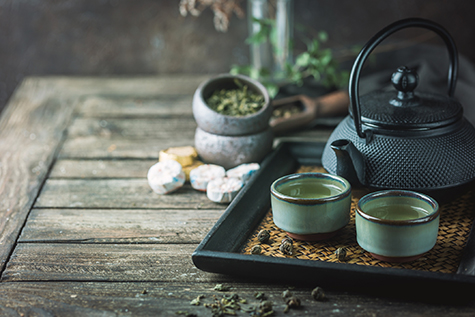The Top 5 Teas for Fighting Colds and Flu


It’s clear that nutrition plays a key role in keeping your immune system healthy. You may be familiar with the classic immune-boosting recommendations of eating more citrus fruits, garlic and ginger, but have you ever considered the power of tea? Drinking tea on a daily basis has been proven to help boost certain aspects of your immune system which is so important as we head into cold and flu season.
If you are already practicing healthy lifestyle habits such as exercise, adequate sleep, eating a balanced diet, staying home when sick and washing your hands often, incorporating tea into your daily life can enhance your immune system even more. Herbals – even tea – can interact with medications and medical conditions, and the flu is a dangerous disease, so please make sure to get expert medical care if you’re sick with a cold or flu and want to consider herbal support. Continue reading to see the top 5 types of tea that are best for reducing cold and flu risk and how they work.
1. Green Tea
Green tea is one of the most popular types of tea in the world. It has been used traditionally for centuries in Indian and Chinese medicine to lessen the effects of and even prevent a wide range of ailments. Some preliminary studies show green tea contains an antiviral antioxidant component called ‘EGCG’ (epigallocatechin gallate) that may help strengthen the immune system in animals and humans. Green tea may be able to kill bacteria and inhibit viruses like the influenza virus, which may lower your risk of getting sick in the first place.
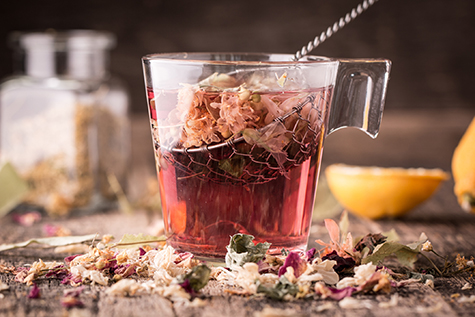 2. Echinacea Tea
2. Echinacea Tea
Made from the echinacea plant, this herbal drink is known for its anti-inflammatory, antioxidant, and antiviral properties. Echinacea tea has been shown to successfully shorten the duration of flu symptoms, similar to anti-flu medications. A clinical study with 473 patients with early flu symptoms were broken into two groups and treated separately with flu medication and echinacea tea. Results showed that echinacea tea was just as effective as the medication in reducing symptoms such as cough, headache, aches, and fever. As with many herbs and supplements, it’s important to buy echinacea from a reputable company to verify its quality and keep in mind that if you have the flu, you should ask your doctor what the safest way to treat it is based on your unique needs rather than self-treating.
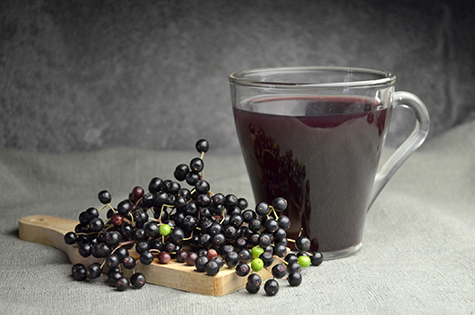 3. Elderberry Tea
3. Elderberry Tea
Elderberries are from the Sambucus tree where both the berries and flowers can be consumed for multiple medicinal and culinary purposes. Elderberry extract has been shown to manage flu symptoms through its potent antiviral properties. While further research on these properties is still needed, one study using elderberry extract improved symptoms, including fever, and a complete cure was achieved in 2-3 days in nearly 90 percent of the elderberry extract group compared to 6 days in the placebo group. Incorporating elderberry tea could be an effective and low-cost way to boost antioxidants and even anti-viral compounds in your body.
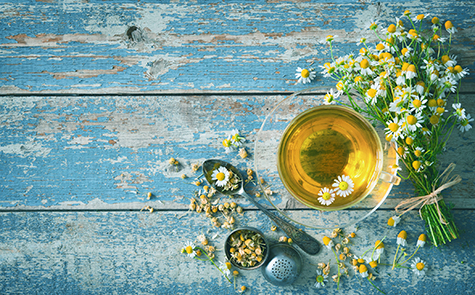 4. Chamomile Tea
4. Chamomile Tea
Chamomile is another fan favorite and is known as one of the oldest herbal remedies for the immune system. Studies show that inhaling steam with chamomile extract may be helpful lessening common cold symptoms, although further research is needed. Specifically, chamomile has anti-inflammatory properties that may help reduce the swelling and redness of a sore throat. It is also known as a calming herb that could support better sleep when sick (or healthy!). Consult your doctor if you’re considering herbal remedies like chamomile to avoid an allergic reaction and if you are pregnant, avoid drinking chamomile tea completely.
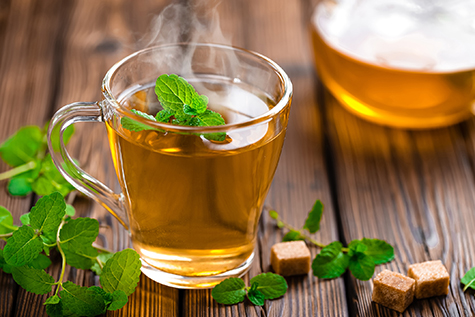 5. Peppermint Tea
5. Peppermint Tea
Known for invigorating the senses, peppermint tea contains the chemical menthol, which has shown in some studies to be antimicrobial and antiviral to help fight off colds and flu. Menthol’s cooling properties may also be beneficial in relieving a sore throat or clearing nasal passageways if you’re already sick. Along with drinking it, you could also try inhaling the steam from the hot tea for decongestion if your medical team thinks that’s safe for you.
While these teas should not be your only treatment for a cold or the flu and can’t prevent you from contracting it if you’re exposed, implementing them on a consistent basis may help build and strengthen your immune system. This could allow you to recover more quickly if you do become exposed. Make sure to work with your doctor to see if herbal remedies could be safe and effective for you. And at the very least, tea is an antioxidant-packed way to stay hydrated, as well.
References
Lee HJ, Lee YN, Youn H-N, et al. Anti-influenza virus activity of green tea by-products in vitro and efficacy against influenza virus infection in chickens. Poult Sci. 2012;91(1):66-73.
Wu D, Wang J, Pae M, Meydani SN. Green tea EGCG, T cells, and T cell-mediated autoimmune diseases. Molecular aspects of medicine. 2012 Feb 1;33(1):107-18.
Rauš K, Pleschka S, Klein P, Schoop R, Fisher P. Effect of an Echinacea-Based Hot Drink Versus Oseltamivir in Influenza Treatment: A Randomized, Double-Blind, Double-Dummy, Multicenter, Noninferiority Clinical Trial. Curr Ther Res Clin Exp. 2015;77:66–72. 2015.
Zakay-Rones Z, Varsano N, Zlotnik M, Manor O, Regev L, Schlesinger M, Mumcuoglu M. Inhibition of several strains of influenza virus in vitro and reduction of symptoms by an elderberry extract (Sambucus nigra L.) during an outbreak of influenza B Panama. The Journal of Alternative and Complementary Medicine. 1995 1;1(4):361-9.
Roschek Jr B, Fink RC, McMichael MD, Li D, Alberte RS. Elderberry flavonoids bind to and prevent H1N1 infection in vitro. Phytochemistry. 2009 Jul 1;70(10):1255-61.
Srivastava JK, Shankar E, Gupta S. Chamomile: A herbal medicine of the past with bright future. Mol Med Rep. 2010;3(6):895–901.
Balakrishnan A. Therapeutic uses of peppermint –A review. J Pharm Sci Res. 2015;7(7):474-476.
Friedman M. Overview of antibacterial, antitoxin, antiviral, and antifungal activities of tea flavonoids and teas. Molecular nutrition & food research. 2007 Jan;51(1):116-34.
